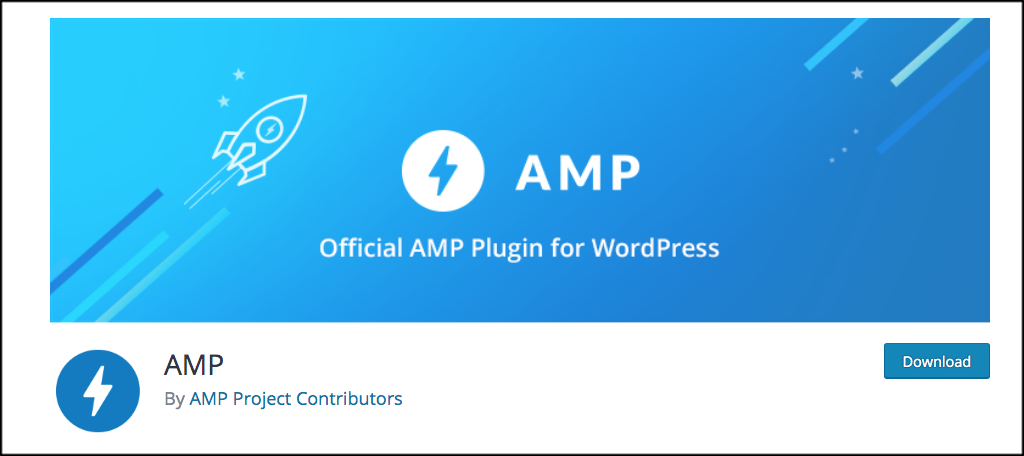Odds are, you have been hearing about the Google Amp Project for several years now. Even though time has passed a lot faster than you realize, AMP has been in place since early 2016. Let’s dive into AMP some and talk about how much you need to still work with it.
What is AMP?
First launched on February 24th, 2016, the AMP Project (Accelerated Mobile Pages) is an open-source project that was created to ensure that mobile web pages operate at an optimal speed.
To really understand how important Google thought this was, you need to understand the mobile movement the has taken place over the last few years.
When originally launched, the Accelerated Mobile Pages Project came with a slogan understanding that read as follows:
“The AMP project aims to ‘build the future web together’ by allowing you to create web pages and ads that are consistently fast, beautiful and high-performing across devices, and distribution platforms.”
This all sounded amazing, but there were problems from the very start. Google originally listed several reasons why websites should adopt an AMP site to go along with the already existing mobile-friendly sites that were being built. Those reasons included:
- Higher Performance and Engagement: Pages that were built using the AMP open-source project were to load instantly. This was supposed to give users a much smoother and more engaging experience.
- More Flexibility and Better Results: Individuals and businesses were given a chance to present their content in a different, more flexible way. In reality, the AMP process was there to strip a lot of formatting out and allow pages to load lightning fast.
Now, over 4 years later, many still debate these issues. While many sites have adopted the Google AMP Project and integrated AMP pages, most on the Internet have not.
How Does AMP Work?
So how does AMP work? Simply put, the Google AMP Project brought with it a new coding language (AMP HTML) which worked by restricting code to increase page load speed times and reliability.
That being said, let’s dive a little deeper. With the new code in place, the restrictions that were set in would allow for:
- A faster loading page for mobile users
- Improved SEO ranking
- More visibility for publishers
- Support for AMP Ads
- AMP analytics
There are three main core components: AMP HTML, AMP JavaScrip (JS), and AMP Cache.
AMP HTML
This is basically standard HTML with some restrictions implemented to allow for reliable performance. Most of the tags in AMP HTML are regular HTML tags. However, some of these tags are replaced with AMP-specific tags. These are actually called AMP HTML components. They make common tag patterns easier to implement.
AMP JavaScript (JS)
The AMP JS library works hard to ensure there is lighting fast rendering of AMP HTML pages. This is the main reason to implement an AMP page; the speed. Furthermore, the JavaScript library is used to properly implement all of AMP’s best performance practices. This includes inline CSS and font triggering.
AMP JS also makes sure that everything from external resources is asynchronous. This means that nothing on the page can block anything from rendering.
AMP Cache
The AMP Cache is used to serve up cached AMP HTM pages. It is basically a proxy-based content delivery network. The main use is for delivering all valid AMP documents.
The AMP Cache fetches AMP HTML pages, caches them, and improves overall page performance automatically. Furthermore, the AMP Cache comes with a built-in validation system.
This system will confirm that a page is guaranteed to work and that it is not relying on external forces that could possibly slow it down. It delivers to you a page in AMP format.
Is It Worth Using?

And now it’s time for the reason you are here. The answer you get is going to depend on who you talk to, really. See, the Google AMP Project was initially created for content-heavy sites, like news sites. The idea was to help these sites spread news and data faster and give readers a much cleaner and smoother experience.
The project is also puts a focus on mobile users. Whether people did or didn’t like AMP, it was clear that if utilized, page load speeds on mobile drastically improved. According to Google, the average mobile webpage takes over 15 seconds to load.
However, when sites use AMP, that load speeds decrease to an incredible 0.7 seconds.
To give you an idea of the numbers, back in 2017, the AMP Project Team announced that 900K domains were using it. Based on the numbers given by W3Techs, the number of websites using AMP has grown significantly into 2019.
Even though the number of sites using AMP is now reaching a little over 50 million with the number of websites online is 1.5 billion.
You can see from those numbers that still roughly only 3% of websites online are using the project. The project is still valid and website owners still implement it. However, since the adoption rate is low, the question then becomes, when is it worth using the AMP format?
Let’s take a look at some instances when it may be ideal for you to create an AMP site.
When to Use It
Basic digging tells us that if you have a content-driven website that is news-heavy, then using AMP pages is ideal. However, here are some other instances when using the Google AMP Project on your website may be necessary.
When Most or All of Your Traffic Comes From Mobile
One of the main reasons AMP was created is because of the major shift in traffic from desktop to mobile that website owners were experiencing. Today, you do see a majority of website traffic coming from mobile, but overall numbers are still about even at 50/50, give or take.
Of course, if your website gets a majority, or all of its traffic from mobile, then using an AMP format is definitely something to look at.
When Page Load Speed is Too Slow
Page load speed is one of the most important aspects of a website. Website owners spend tons of time and money optimizing page speeds using a number of different tools.
If your page load speed time is just too slow, then you may want to consider using AMP to help bring download speeds up to par. This is especially true for mobile download speeds, as mentioned above.
Faster load times mean a more rewarding and smoother experience for your website users. This time could be the difference between closing a sale and gaining a client, or having someone simply leave the site because they were tired of waiting.
To Help Lower Bounce Rate
Statistics from the past tell us that around 53% of people will leave a page if it takes longer than 3 seconds to load. A staggering 79% of people leave a site if it performs poorly.
What does this mean? It means you have three seconds or less to show your website users that your site runs smoothly.
In three seconds or less, you need to capture and keep the user’s attention. The Google AMP Project can help with this. Since faster page load times improve usability and engagement, this is something you may want to consider.
So, with all of that being said, is AMP right for you? The above reasoning should help you figure that question out. My opinion is that it should be taken on as a case-by-case basis.
Honestly, my guess is that a ton of people who are reading this article are still surprised that AMP is still actually a thing.
Google AMP Timeline
So, after all the information above, many of you may still be wondering where Google AMP is today and if it is still relevant enough that it continues to move forward and be developed. Let’s take a look at a timeline for AMP.
- October of 2015: Google announces the AMP Project.
- February of 2016: Google launches the Accelerated Mobile Pages Project.
- September of 2016: AMP starts to appear in search results.
- August of 2017: AMP Ads completes the second phase of development.
- February of 2018: AMP stories are begin.
- December of 2018: An official WordPress plugin launches.
- April of 2019: JavaScript is usable in AMP.
- April of 2019: Signed Exchange solves the URL problem.
The point of this is to show you that yes, there are still things in development regarding AMP. If you are considering using it on your website, this timeline of events should help with the choice. The Google AMP Project is still very much active and used.
Best Google AMP Project Plugins for WordPress
Since Amp is relevant enough for a lot of people to debate using, I thought I would show you a couple of excellent WordPress plugins for AMP. Basically, if you have a WordPress website, then installing and activating one of these plugins will make your transition to an AMP format much quicker and easier.
AMP

The AMP plugin supports fully integrated publishing for WordPress websites. The plugin is lightweight and easy to use. There are three different template modes that users can choose between. These modes are Standard, Transitional, and Reader.
Using this plugin allows you to keep the site intact, so there is no need to separate AMP and non-AMP versions. You can implement it on your website very easily.
AMP for WP

Another fantastic AMP plugin is AMP for WP. It automatically adds Accelerated Mobile Pages functionality to your website. The plugin is compatible with all the major page builders and plugins and will work seamlessly on your website.
The available features are almost limitless. Needless to say, if you want a full-functioning AMP site, this plugin is a perfect choice.
Is AMP the Future?
Again, this is a question worth asking several different people. You want to get a good opinion and viewpoint from those with varying types of sites. If you work it on a case-by-case basis and see what different site owners are doing, then you should get a good idea regarding if it is right for you or not.
With more and more people accessing websites on mobile devices, many may say yes, the Google AMP Project is indeed the future. However, a case-by-case look tells us that desktop users are still very plentiful.
Furthermore, while it seems like a lot of sites have adopted AMP, when you actually crunch the numbers, you can see that only about 3% of the sites online are utilizing it.
Yes, Google continues to develop AMP and it continues to be relevant in certain situations. If your site is content-heavy, like a news site, then AMP is important to think about using for obvious reasons. If not, Amp may not be the right choice for your site.
The Google Amp Project Is Relavant
To this day, experts still discuss and debate if the Google AMP Project. There is little doubt that it does improve page speed and ranking in Google. It also improves the overall page experience for your website users.
That being said, like many other things Google has released, it does feel like it is more of a must-do instead of a choice. This is one of the main reasons so many people become upset over things that Google does.
They leave you with no choice.
Either way, it seems at this point and time you still have options. Roughly 97% of the websites online have not made it a priority to use AMP in any way. However, it has gained enough traction over the years for Google to continue to develop and update the project.
Have you been using AMP on your website for a long time already? Do you use it by choice to speed up your site, or are you using it because you feel Google is making you?

